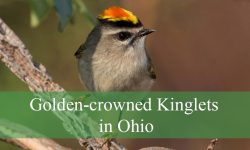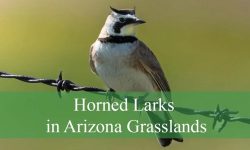Maryland is home to a diverse range of owl species, each with its own unique appearance, behavior, and call. From the haunting hoot of the Great Horned Owl to the soft trill of the tiny Eastern Screech-Owl, these nocturnal birds add mystery and excitement to the state’s forests, wetlands, and farmlands. Owls can be found in nearly every region of Maryland, from the western mountains to the eastern shore.
In this guide, you’ll explore 8 species of owls that can be found throughout Maryland. Some, like the Barred Owl and Barn Owl, are year-round residents that nest and hunt locally, while others such as the Snowy Owl and Long-eared Owl are seasonal visitors from the north. Each owl species has been included with detailed identification features, size, call, and best places to spot them in the state.
With helpful pictures and identification tips, this article is perfect for birdwatchers, nature enthusiasts, and anyone curious about owls in Maryland. Scanning treetops at dusk or listening for soft calls in a forest can make every outing an exciting search for these silent hunters. Knowing what to look and listen for will make your owl-spotting adventure even more rewarding.
Common Owls Found in Maryland
Great Horned Owl (Bubo virginianus)
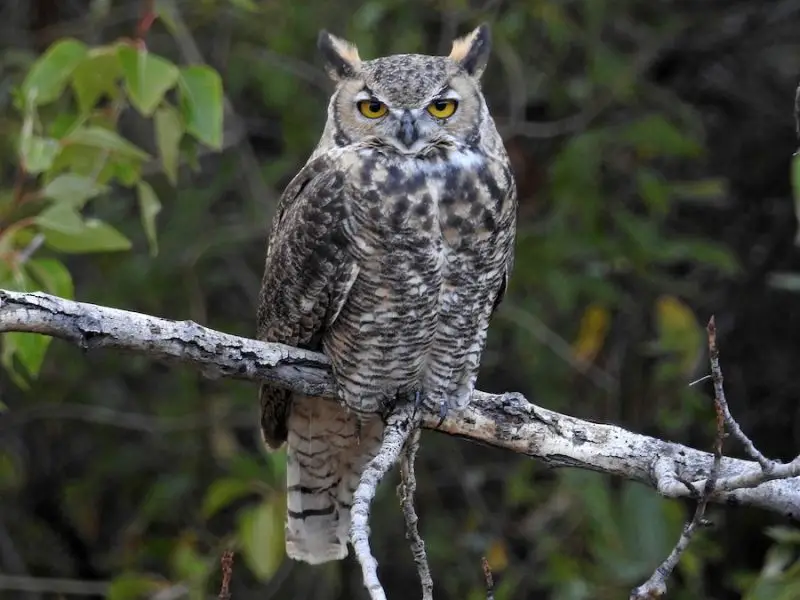
The Great Horned Owl is one of the largest and most powerful owls found in Maryland. Adults can reach a body length of up to 25 inches and have an impressive wingspan of around 4.6 feet. They are easily recognized by their large size, broad wings, and prominent feathered ear tufts. Their plumage is mottled gray-brown with a white throat patch and striking yellow eyes that stand out against their facial disk.
This owl is known for its deep, booming hoots that often sound like a series of five notes: “hoo-hoo hooo hoo-hoo.” These calls are most often heard at dusk or during the night and are used both to defend territory and communicate with mates. Great Horned Owls are most vocal during the winter breeding season, and their haunting calls can be heard across woodlands, suburban neighborhoods, and agricultural fields.
The Great Horned Owl is an apex predator with a varied diet that includes mammals like rabbits, squirrels, and skunks, as well as birds, reptiles, and even other owls. Their powerful talons and keen eyesight allow them to hunt effectively at night. They often perch silently on tree branches before swooping down on their prey with remarkable speed and precision.
In Maryland, they are commonly found in a wide range of habitats including forests, wetlands, city parks, and rural areas. They adapt well to human presence and often nest in large trees, abandoned buildings, or old hawk nests. Their adaptability and fearsome hunting skills make them one of the most widespread and successful owl species in North America.
Barred Owl (Strix varia)
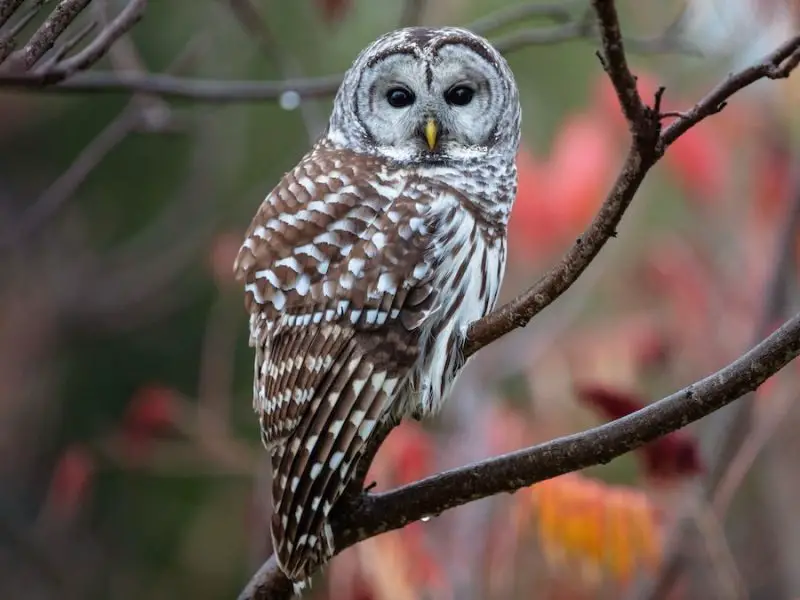
The Barred Owl is a medium-to-large owl known for its rounded head with no ear tufts and soulful dark brown eyes. Its plumage is mottled brown and white with horizontal barring on the chest and vertical streaks on the belly, giving it a distinctive appearance. It grows up to 20 inches in length with a wingspan reaching about 3.5 feet, making it slightly smaller than the Great Horned Owl.
Its signature call is a rhythmic hooting phrase that sounds like, “Who cooks for you? Who cooks for you-all?” This call is often heard echoing through the forests of Maryland, particularly at dusk or on calm nights. Unlike some owl species, Barred Owls are more vocal year-round and are often heard more than seen due to their preference for dense woodlands.
Barred Owls feed mainly on small mammals such as mice, voles, and chipmunks, but they also consume birds, amphibians, insects, and crayfish. They are opportunistic hunters and use their excellent vision and hearing to detect prey from a perch before silently swooping in. Unlike many other owl species, they may also hunt during daylight, especially on overcast days.
In Maryland, Barred Owls are residents of mature deciduous and mixed forests, often near rivers, swamps, and wetlands. They nest in tree cavities or old nests made by other large birds. Though they prefer deep woods, they can also be found in suburban areas with sufficient tree cover and access to water sources.
Eastern Screech-Owl (Megascops asio)
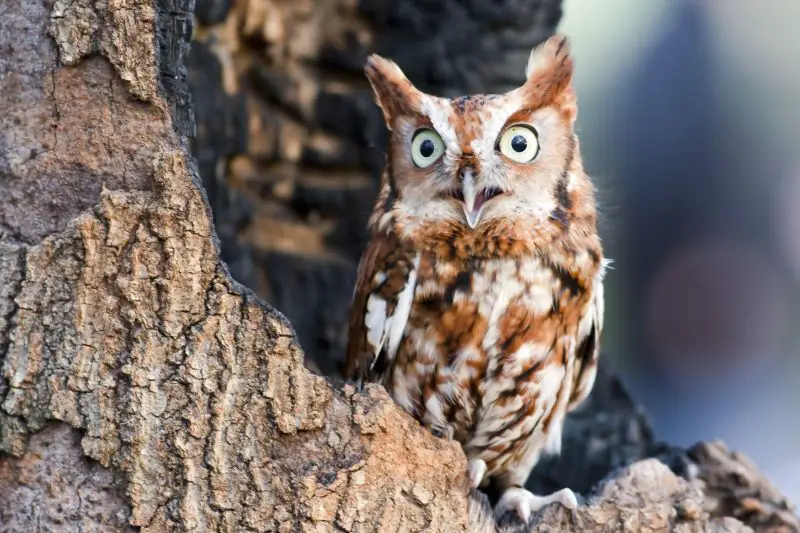
The Eastern Screech-Owl is a small, stocky owl measuring about 8 to 10 inches in length with a wingspan of up to 24 inches. It has a compact body with a large head and prominent ear tufts, giving it a surprisingly fierce look for its size. This owl comes in two color morphs—gray and reddish-brown—both of which provide excellent camouflage against tree bark.
Despite its name, the Eastern Screech-Owl doesn’t actually screech. Instead, its call is a descending whinny-like trill, often described as a ghostly horse whinny, followed by a soft trill. These sounds are most commonly heard during the breeding season, especially around dusk and early nightfall, and they help mates locate each other in the dark.
The diet of the Eastern Screech-Owl consists primarily of small mammals, insects, birds, and occasionally amphibians and reptiles. They are highly adaptable hunters that take advantage of a wide range of prey, often capturing insects near street lights or catching rodents in backyard areas. Their ability to blend into their surroundings helps them remain unnoticed by both prey and predators.
These owls are common across Maryland and can thrive in a variety of habitats, from forests and parks to suburban backyards and orchards. They frequently use tree cavities, woodpecker holes, or nest boxes for nesting and roosting. Though they are widespread, their small size and excellent camouflage make them difficult to spot during the day.
Barn Owl (Tyto alba)
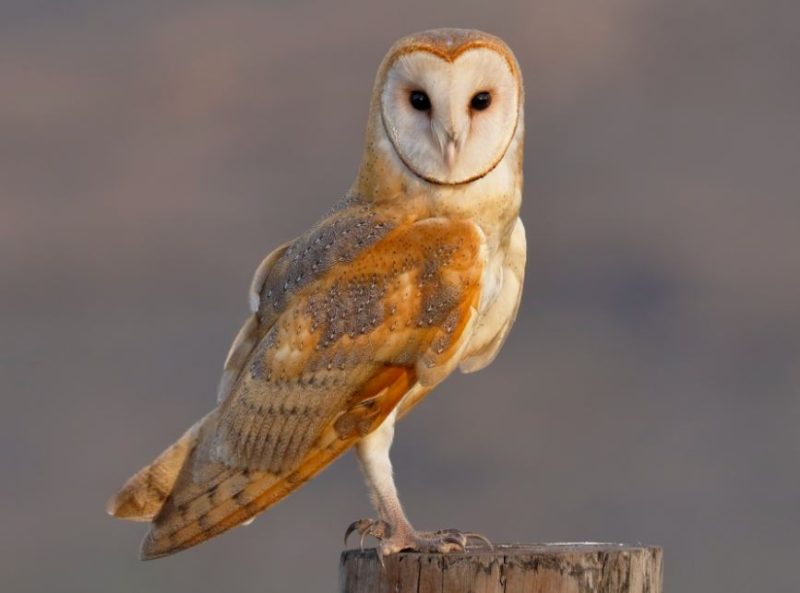
The Barn Owl is easily recognized by its pale, heart-shaped facial disk, white to light golden body, and long legs. Adult Barn Owls measure about 13 to 16 inches long and have a wingspan of approximately 3.5 to 4 feet. Their ghostly appearance and silent flight contribute to their reputation as mysterious, nocturnal hunters.
Unlike other owls that hoot, Barn Owls produce a long, eerie screech that can be quite startling at night. They are usually silent while hunting but may call when disturbed or during courtship. Their calls are often heard around open fields or agricultural areas where they forage for food.
Barn Owls are specialist rodent hunters, feeding mostly on mice, voles, and rats. A single Barn Owl can eat over 3,000 rodents in a year, making them valuable for natural pest control. They rely heavily on sound to locate prey, using their exceptional hearing and silent flight to ambush small mammals even in total darkness.
In Maryland, Barn Owls are found in open grasslands, marshes, farms, and occasionally in coastal areas. They often roost and nest in barns, silos, and nest boxes placed in rural landscapes. Although once common, their numbers have declined in parts of Maryland due to habitat loss and fewer suitable nesting sites, prompting conservation efforts to maintain their populations.
Northern Saw-whet Owl (Aegolius acadicus)
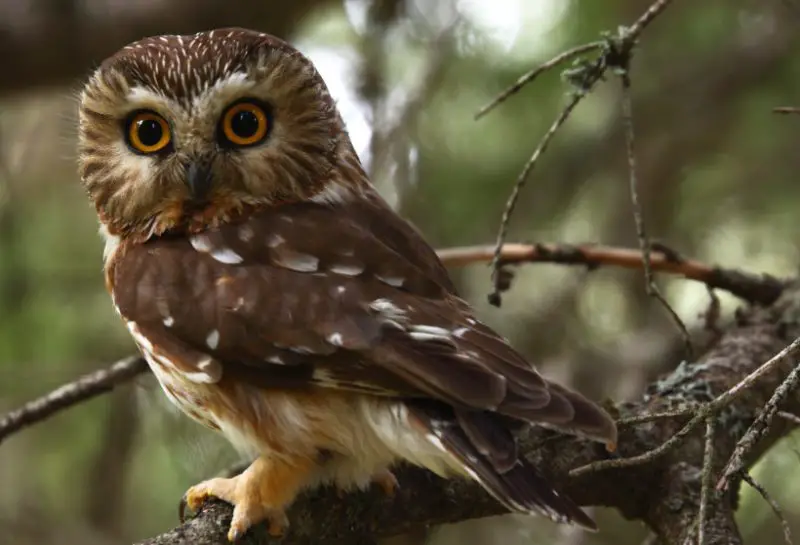
The Northern Saw-whet Owl is one of the smallest owls in North America, measuring just 6 to 9 inches in length with a wingspan of around 16 to 22 inches. It has a rounded head with no ear tufts, a pale facial disk bordered in brown, and large yellow eyes that give it a striking appearance. Its brown body is streaked with white on the underparts, providing good camouflage in forest settings.
This owl gets its name from its call, which sounds like the repeated sharpening of a saw—usually a soft, repetitive “toot-toot-toot” that can continue for minutes at a time. These vocalizations are most common during the breeding season and can be difficult to trace due to their high pitch and distance-carrying nature. The species is typically more heard than seen because of its secretive habits.
Northern Saw-whet Owls feed mostly on small mammals, especially mice and voles. They hunt from low perches in the forest and are primarily nocturnal, relying on keen hearing to detect their prey. During the day, they roost quietly in dense conifers or shrubs and are extremely difficult to locate unless actively calling.
In Maryland, these owls are primarily seen during the fall migration, especially in forested areas in the western part of the state. A few may remain and breed in high-elevation coniferous woods. Birders often spot them at known migration monitoring stations such as those in Garrett County or near forest preserves during banding efforts in late October through November.
Short-eared Owl (Asio flammeus)
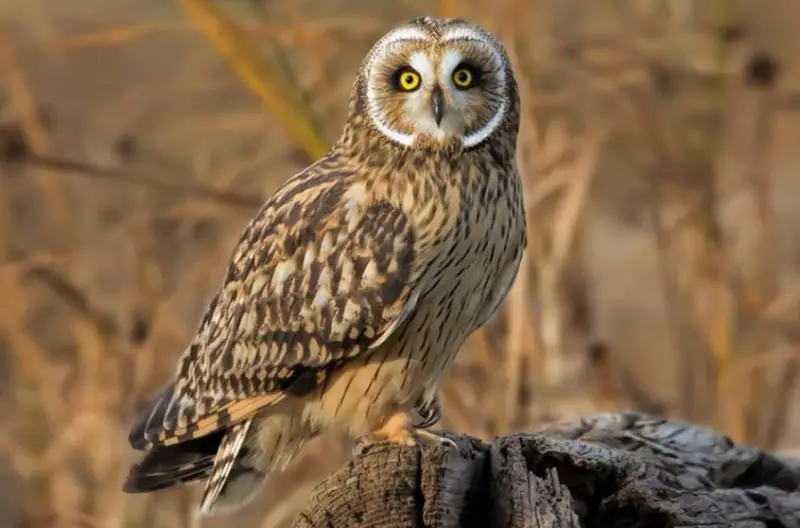
The Short-eared Owl is a medium-sized species with a body length of up to 17 inches and a wingspan of about 38 to 44 inches. Its plumage is mottled brown with pale underparts and dark markings around the eyes, giving it a fierce, mask-like appearance. It has very short ear tufts that are usually not visible, and its round face helps funnel sound to its ears.
This owl is most active during dawn and dusk, making it one of the few owl species often seen flying in daylight. Its buoyant, moth-like flight style sets it apart from other owls. Short-eared Owls are generally quiet, but during the breeding season they produce barking calls and high-pitched screams. In Maryland, they are more likely to be seen silently gliding low over open fields.
Their primary diet consists of small mammals, especially voles, shrews, and mice. Short-eared Owls hunt by flying low over grasslands and marshes, scanning the ground for movement. They are opportunistic and may occasionally feed on small birds or insects if rodent populations are low.
In Maryland, Short-eared Owls are mostly winter visitors, appearing in open habitats such as reclaimed farmland, coastal marshes, and grasslands from November through March. Prime locations to observe them include Eastern Shore marshes and areas like the Chesapeake Farms Wildlife Management Area and the Nassawango Preserve.
Long-eared Owl (Asio otus)
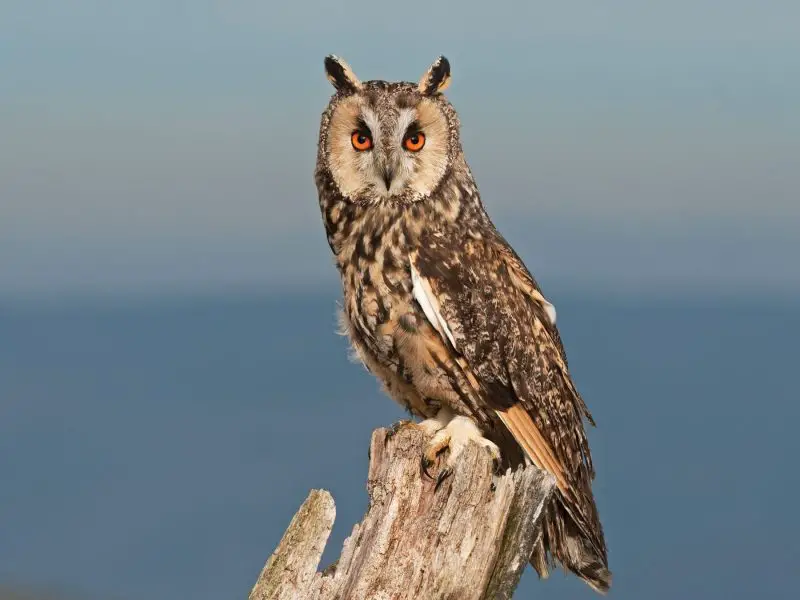
The Long-eared Owl is a medium-sized owl, measuring about 13 to 16 inches in length with a wingspan of around 35 to 39 inches. It is characterized by its long, upright ear tufts, orange facial disk with dark edges, and streaked brown body. Its slim shape and cryptic coloration make it one of the most difficult owls to detect in the wild.
Long-eared Owls are nocturnal and secretive, typically roosting in dense conifer trees during the day. Their call is a low, repetitive “hoo… hoo… hoo” spaced several seconds apart and can be surprisingly soft given their size. During the breeding season, males call to attract females and defend territory, though these sounds are rarely heard in Maryland due to the species’ rarity.
These owls feed mainly on small mammals such as voles, mice, and shrews. They hunt from perches and use their exceptional hearing to locate prey in grassy or shrubby areas. In winter, they may form communal roosts, where several individuals gather in a single dense tree, which can offer a rare viewing opportunity for birdwatchers.
In Maryland, the Long-eared Owl is considered a rare and irregular migrant. Though it formerly nested in the state, sightings are now limited primarily to winter months, especially in the central and western regions. Birders may occasionally encounter them at wildlife sanctuaries like Soldiers Delight or in preserved woodlots with adjacent open fields.
Snowy Owl (Bubo scandiacus)

The Snowy Owl is a large, iconic owl species best known for its dazzling white plumage and Arctic origins. Adults can reach lengths of 20 to 28 inches, with an impressive wingspan of up to 5.5 feet. Males are almost entirely white, while females and juveniles display more dark spotting and barring, which helps with identification. Their yellow eyes and black beak stand out against their pale feathers.
Unlike most owls, the Snowy Owl is diurnal and often hunts during the day. It has a deep, raspy hoot but is usually silent while in its southern wintering grounds. In Maryland, it appears sporadically during irruption years, when food shortages in the Arctic drive them southward in greater numbers. These movements are unpredictable and can bring Snowy Owls to coastal areas and open farmland.
Their diet consists mainly of lemmings and voles in the Arctic, but in Maryland they adapt by hunting rabbits, rodents, waterfowl, and shorebirds. They use a perch-and-wait hunting strategy, often sitting on dunes, fence posts, or airport runways where they can scan for prey. Their keen eyesight and silent flight make them deadly efficient predators.
In Maryland, Snowy Owls are rare winter visitors most often spotted along the Eastern Shore and coastal regions such as Assateague Island, Ocean City, and near marshes or open airports. Sightings typically occur between November and February during irruption winters, and their presence often attracts large crowds of birders hoping for a glimpse of this majestic Arctic hunter.
FAQ About Owls in Maryland
What types of owls live year-round in Maryland?
Maryland is home to several resident owl species that can be seen throughout the year. These include the Great Horned Owl, Barred Owl, Eastern Screech-Owl, and Barn Owl. They nest and hunt locally in a variety of habitats from forests to suburban areas.
Are Snowy Owls found in Maryland?
Yes, Snowy Owls can occasionally be seen in Maryland during winter, especially in irruption years when they move south from the Arctic. They are most often spotted along the coast, open fields, or at airports during late fall and early winter.
When is the best time to see owls in Maryland?
The best time to observe owls in Maryland is during the early morning or at dusk when they are most active. Winter months are also excellent for spotting migrant species like the Short-eared Owl and Snowy Owl.
Where can I see owls in Maryland?
Owls can be found across Maryland in forests, wetlands, farmlands, and coastal areas. Notable locations include Assateague Island, Blackwater National Wildlife Refuge, Patuxent Research Refuge, and western mountain forests.
What do owls in Maryland eat?
Owls in Maryland feed on a wide variety of prey including rodents, small mammals, birds, insects, and occasionally amphibians. Barn Owls and Short-eared Owls are especially known for controlling rodent populations in open fields.
Do owls in Maryland make noise?
Yes, each owl species has its own distinctive call. The Great Horned Owl makes a deep hoot, the Barred Owl has a “Who cooks for you-all?” call, and the Eastern Screech-Owl produces a soft, descending trill. Calls are most often heard at night.
Are owls protected in Maryland?
Yes, all owl species in Maryland are protected under federal and state wildlife laws. It is illegal to harm, trap, or keep wild owls without proper permits. Observing them from a distance and respecting their space is highly encouraged.
Can I attract owls to my backyard in Maryland?
You can attract owls by providing a natural or semi-wild habitat with trees, shrubs, and a food source like rodents. Installing nest boxes for species like the Eastern Screech-Owl or Barn Owl can also increase the chance of owl sightings.

